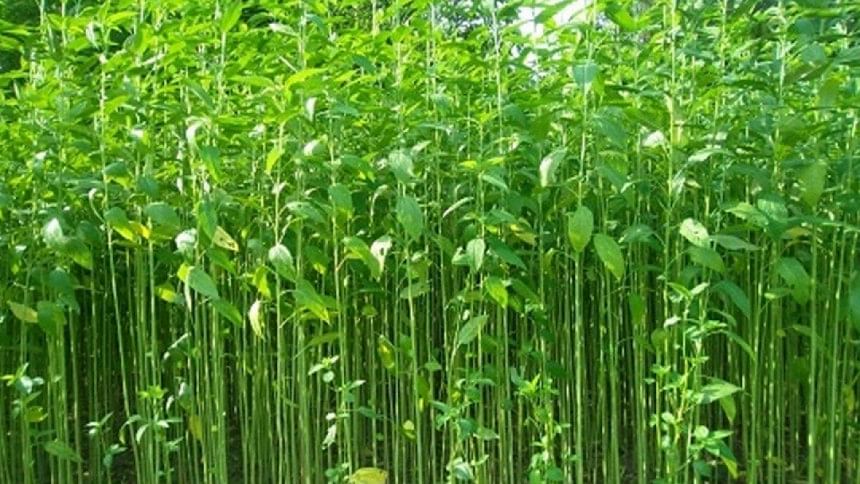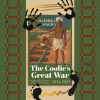A history of this subcontinent, woven in jute

Anyone interested in our part of the world will find Tariq Omar Ali's A Local History of Global Capital: Jute & Peasant Life in the Bengal Delta (Princeton University Press, 2018) a remarkably thought-provoking work. Based on the socio-economic, intellectual and even cultural history of events leading up to the birth of Bangladesh, Tariq Omar Ali weaves adeptly in it a narrative of the manner in which fluctuations in the demand for jute internationally shaped the lives of the peasants of the Bengal delta, contributing in the process to the identity formation of a people who would eventually end up with a nation of their own.

Associate Professor at the Edmund A. Walsh School of Foreign Service of Georgetown University, Ali draws on archival and library resources, on extensive research he carried out in our country and India, document depositories such as the National Archives of Bangladesh, the Dundee University Archives of Scotland, and the India Office Records at London's British Library. He also depends on memoirs and accounts written by men such as Abul Mansur Ahmad and Maulvi Tamizuddin Khan and mofussil press productions. Ali is thus able to compose through such diligent scholarship a fascinating historical narrative about late 19th and early to mid- 20th century Bangladesh. Its history, we can conclude from the book, is intricately tied to the production and marketing of jute, which we all once knew as our "golden fibre".
The book reveals how in mid-19th century colonial East Bengal jute first emerged "as a global commodity". Under British rule, of course, rising demand meant substantial profits for British colonizers and their agents and others based mostly overseas or in Calcutta. Significantly, when Pakistan was created, it was business houses run by non-Bengali Pakistanis that kept prospering from the bulk of the profits earned from the jute trade. But cultivators of the region were increasingly drawn in the course of its political and socio-economic evolution into developing the kind of consciousness that would make them feel increasingly that jute production should benefit them more than it had been doing, and that they should act decisively for this reason.

In the 100 years that is his focus, Ali depicts a subcontinent where initially British capital took advantage of the empire's powerful presence to make East Bengal a source of a fibre that it found indispensable then. One positive consequence of British control over jute production and marketing, however, was to create infrastructure in the Bengal countryside such as railroads, telegraphs and river ports, as well as mills. This would empower some locals and lead to the rise/spread of mofussil towns, ultimately making their inhabitants so politically conscious that they would eventually demand the right to determine their own destiny as well as indulge themselves as consumers. But Ali notes as well how "market entanglements created new forms of vulnerability" since "peasant households' well-being depended on the fluctuations of prices in distant markets." If farmers, traders and dealers of jute in Bengal benefitted from the relative prosperity that good prices of jute brought them, to use a word Ali uses repeatedly, poor production or prices or problems in distribution led to periods of "immiseration" for Bengal's people too.
Empirically based, Ali's book benefits from his ability to apply insights derived from his knowledge of recent historiography and theories of history. Concepts such as the emergence of a "global countryside" as a consequence of empire-building and "new technologies of commodification", but also of the possibilities of "self-fashioning" brought about "through global market entanglements", enable Ali to offer fresh insights into the making of people who would soon be wanting a country of their own. He convinces us thereby that jute, in essence, played a "transformative" role for the delta's people in manifold ways.
Two aspects of Ali's A Local History of Global Capital deserve special mention. One is the dexterous sequencing of his chapters. The first chapter deals with the period between the Crimean War and World War I when jute cultivation throughout the Bengal delta "expanded exponentially", making it soon the region's "leading cash crop". An unfortunate consequence, however, was the plight of peasants whenever jute prices dipped because of falling demand internationally, as in the first world war. But when sales boomed, as Ali observes in his third chapter, jute cultivators and those who marketed it locally would flourish, becoming consumers wanting to indulge themselves variously. This is why most of them would be opposing the "swadeshi" movement of 1905-6 and why the mofussil would henceforth be full of haats and bazaars where "foreign" goods would be bought and sold. The third chapter illustrates the intricate ways in which the whole Bengal countryside was transformed by jute and how Calcutta became the apex of a network stretching from the jute fields to the metropolis through mofussil sites connected by steamers, train services and roads. Inevitably, he points out, local politics was stimulated in the process as well as was state policing. Nationalistic feelings developed too, though the second partition of Bengal became a topic and a source of increasing tension. As Ali notes, Calcutta's "dominance over mofussil towns" began to be "challenged" when "mofussil towns emerged as independent centres of intellectual production and political action".

Chapter Four of Ali's book concentrates on periods of "immiseration" in the Bengal delta as jute prices fell due to external factors such as the two world wars, the Great Depression of 1930, market manipulation, or "ecological disasters" frequent in the region. Impoverishment and famine oppressed people with the fall in the fibre's demand or distribution problems. In Chapter Five, titled "Agrarian Forms of Islam", we read about the popularity of the Khilafat movement at one point and the Pakistani one at another. Mofussil Muslims, obviously more and more educated and conscious of their rights, strove against internal as well as external forms of domination that they felt led to immiseration. As print culture flourished, the topic of Muslim decline kept appearing in books, magazines and pamphlets.
A consequence, as the next Chapter Six demonstrates, is the rise of "peasant populism" and the bid for empowerment through electoral politics. The Krishak Praja Party's success in the 1937 elections becomes for Ali illustrative of the sense of empowerment of a "rural Muslim"—someone he equates with a "peasant jute cultivator"—and the rise of the "rural Muhammadan". However, the way it was booted out of power soon afterwards, Ali stresses, accentuated the cultivator's sense of being manipulated and disempowered by metropolitan conspiratorial forces. The consequence, Ali, argues in his seventh chapter, would be the partition through which East Bengal would become Pakistan. As Ali's narrative ends, it is obvious that jute profits would now be benefitting the Muslim business people of non-Bengali origins who now owned the Pakistani jute mills and dominated its marketing. The dissatisfied Bengali Muslim peasants would, consequently, join in the stream that would be flowing towards the land that would become Bangladesh.
By the time they conclude Tariq Omar Ali's A Local History of Global Capital: Jute & Peasant Life in the Bengal Delta, Bangladeshi readers will surely be admiring the seamless sequencing of the chapters that helped them throughout in re-visioning step by step the intricate and developing connections between the history of jute production and the emergence of their country. But no doubt they will be admiring as well Ali's prose style and reflecting on the immense readability of his work. This is, indeed, a very lucidly written and easily understandable book despite the subtlety of its arguments and the historical depths its author has traversed.
Fakrul Alam is Supernumerary Professor of English, Dhaka University.

 For all latest news, follow The Daily Star's Google News channel.
For all latest news, follow The Daily Star's Google News channel. 









Comments